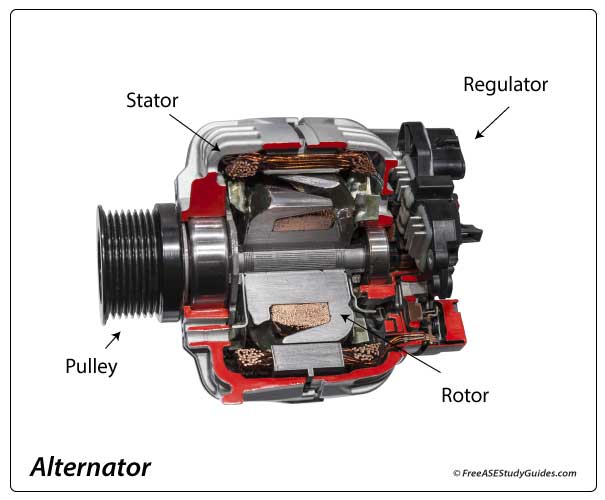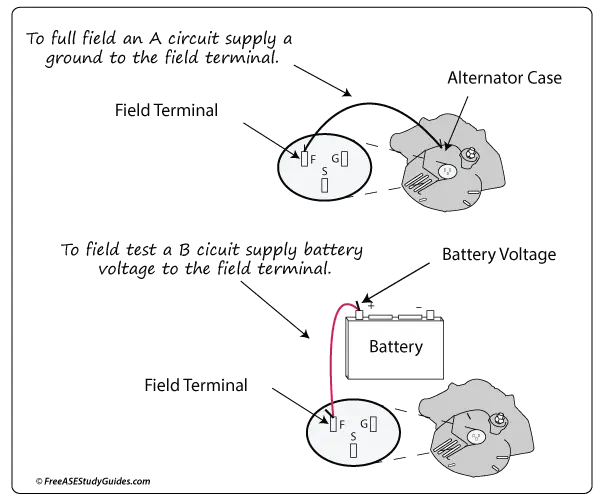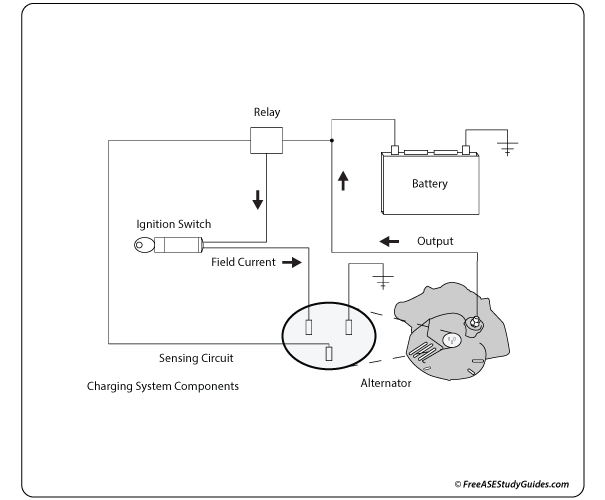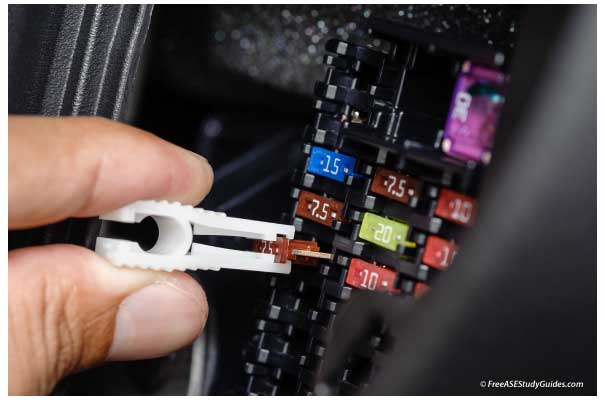Voltage Regulators

At the heart of the automotive electrical system is the alternator. Without voltage regulation, the alternator would consistently produce too much voltage, overcharging the battery and possibly causing damage to the electrical system. An alternator with a faulty voltage regulator will make a whining or humming noise as it receives inaccurate voltage signals from the regulator.

Full-fielding an alternator bypasses the voltage regulator and produces maximum output. Charging voltage can be regulated using an electro-mechanical, electronic, or computer-controlled regulator.
The desired voltage output is achieved by changing the amount of current to the field circuit. Consider the field circuit as power into the alternator. The more current into the alternator's field circuit, the more output voltage the alternator will produce. The increase in field current increases the magnetic field created inside the alternator.
A faulty alternator will make a whining or humming noise from a faulty overcharging voltage regulator, burned diodes, or shorted stator windings. The bearings wear, resulting in a whine that increases with engine speed. If the noise disappears after unplugging the connector, it is likely an internal electrical issue.

The system must know how much voltage it already has before deciding whether to increase or decrease the current to the field circuit. If the sensing voltage is low and below the alternator's setting (lights on), the system will increase current to the field circuit, increasing alternator output. When the vehicle is idling, and no accessories are on, the battery and the sensing voltage are high. This situation results in low current supplied to the field circuit and low alternator output.
Low System Voltage

When system voltage drops below approximately 10 Volts/60 seconds with the engine running, the PCM will set OBD II code P0562 and illuminate the check engine light. This problem typically results from a faulty alternator, a bad battery, cables/wiring, or a blown fuse.